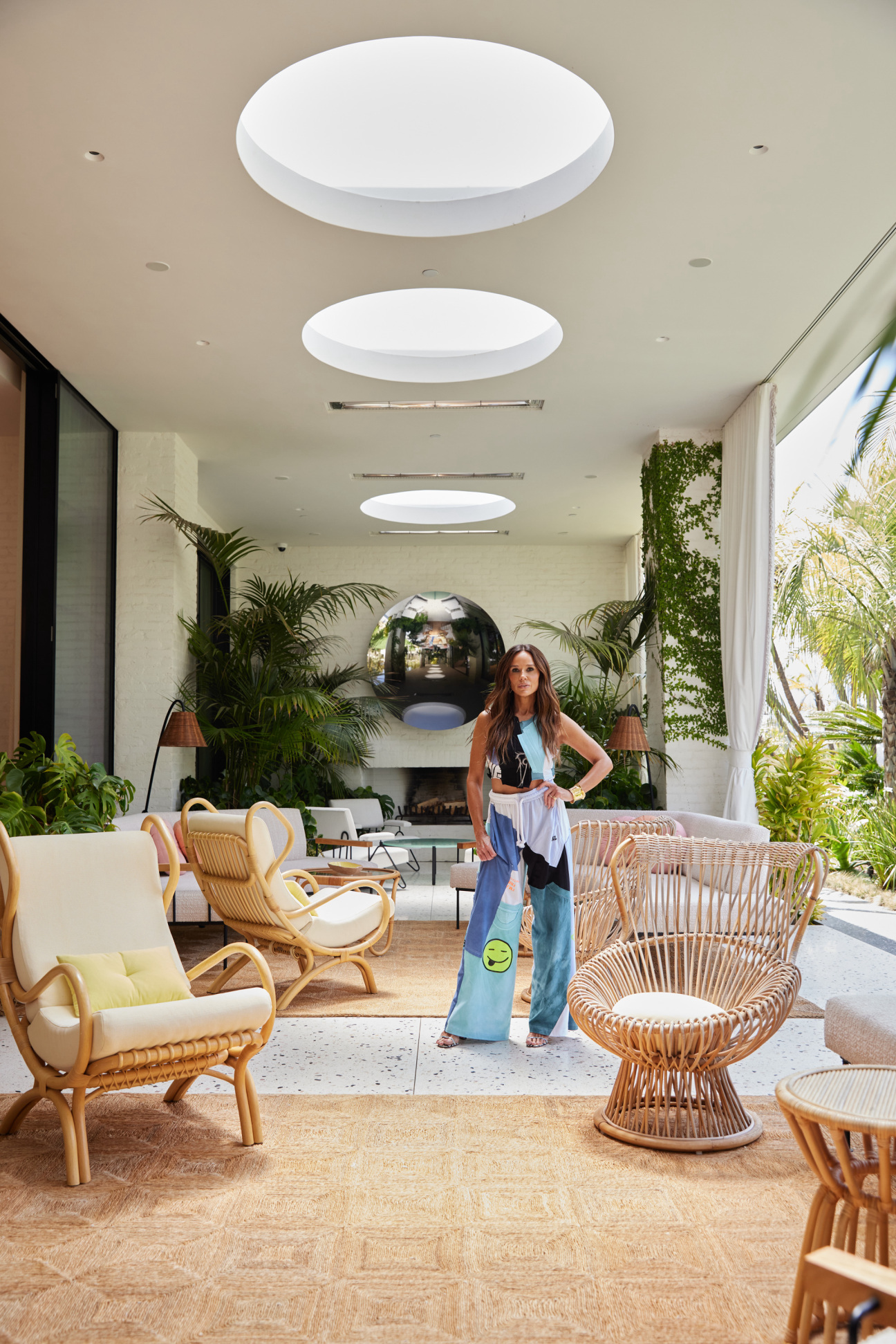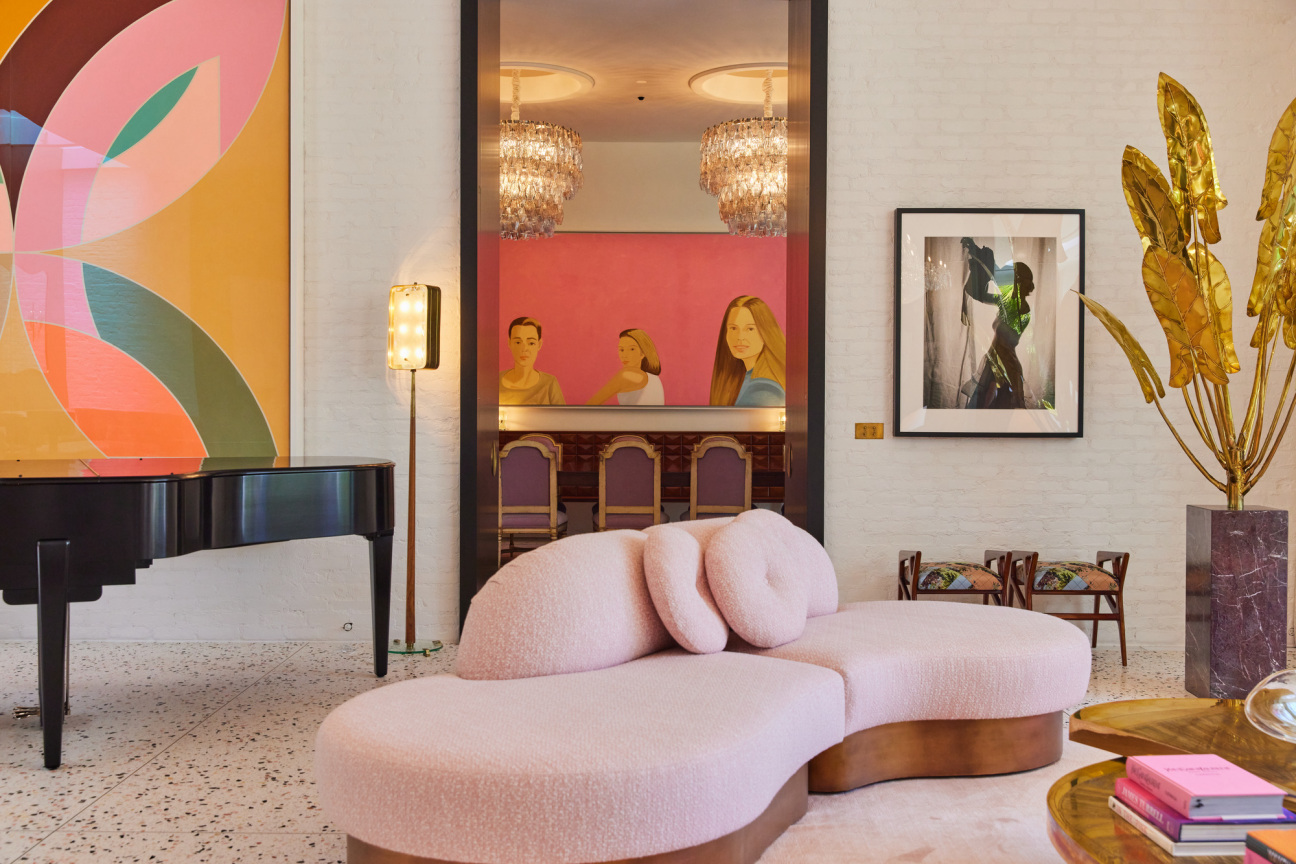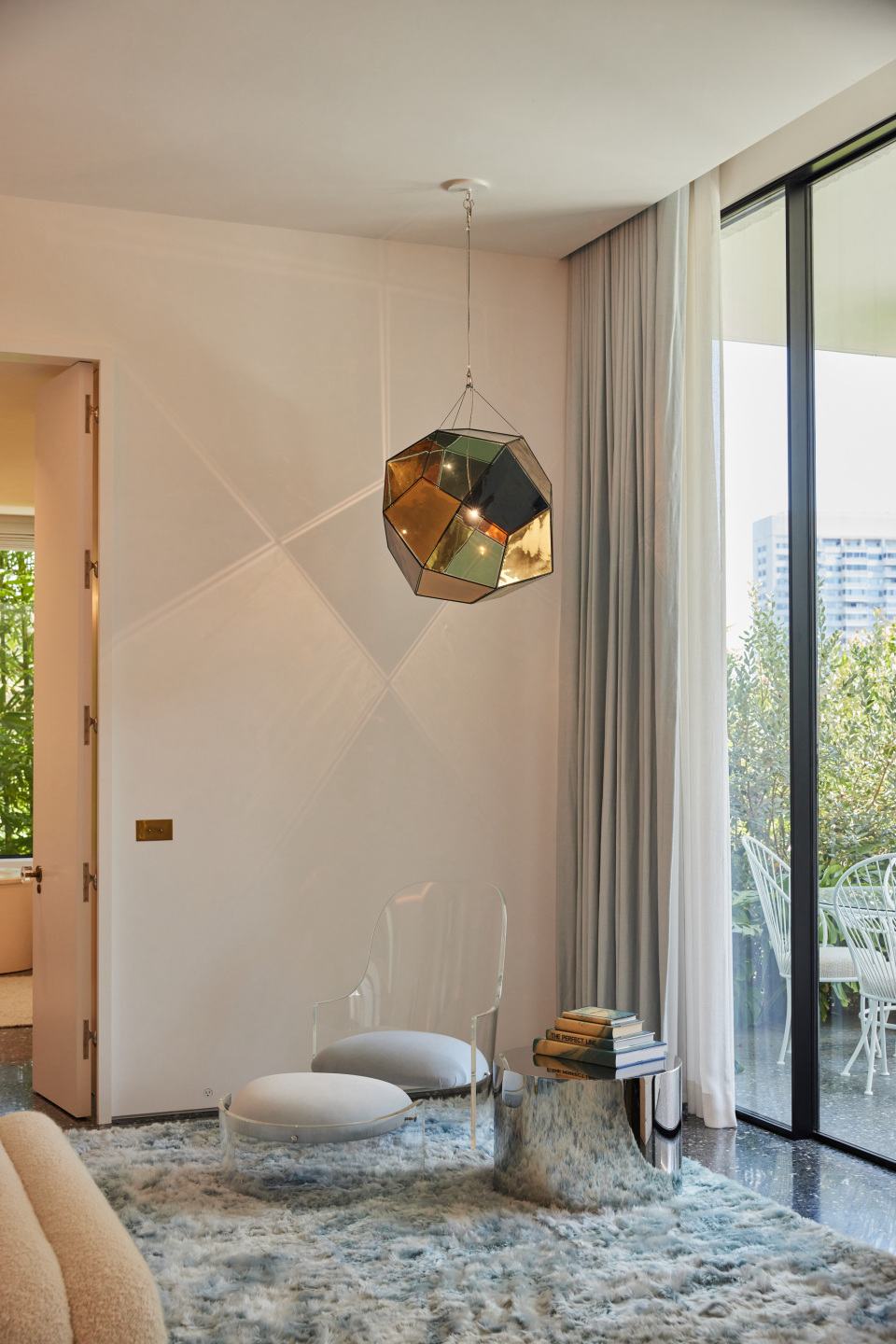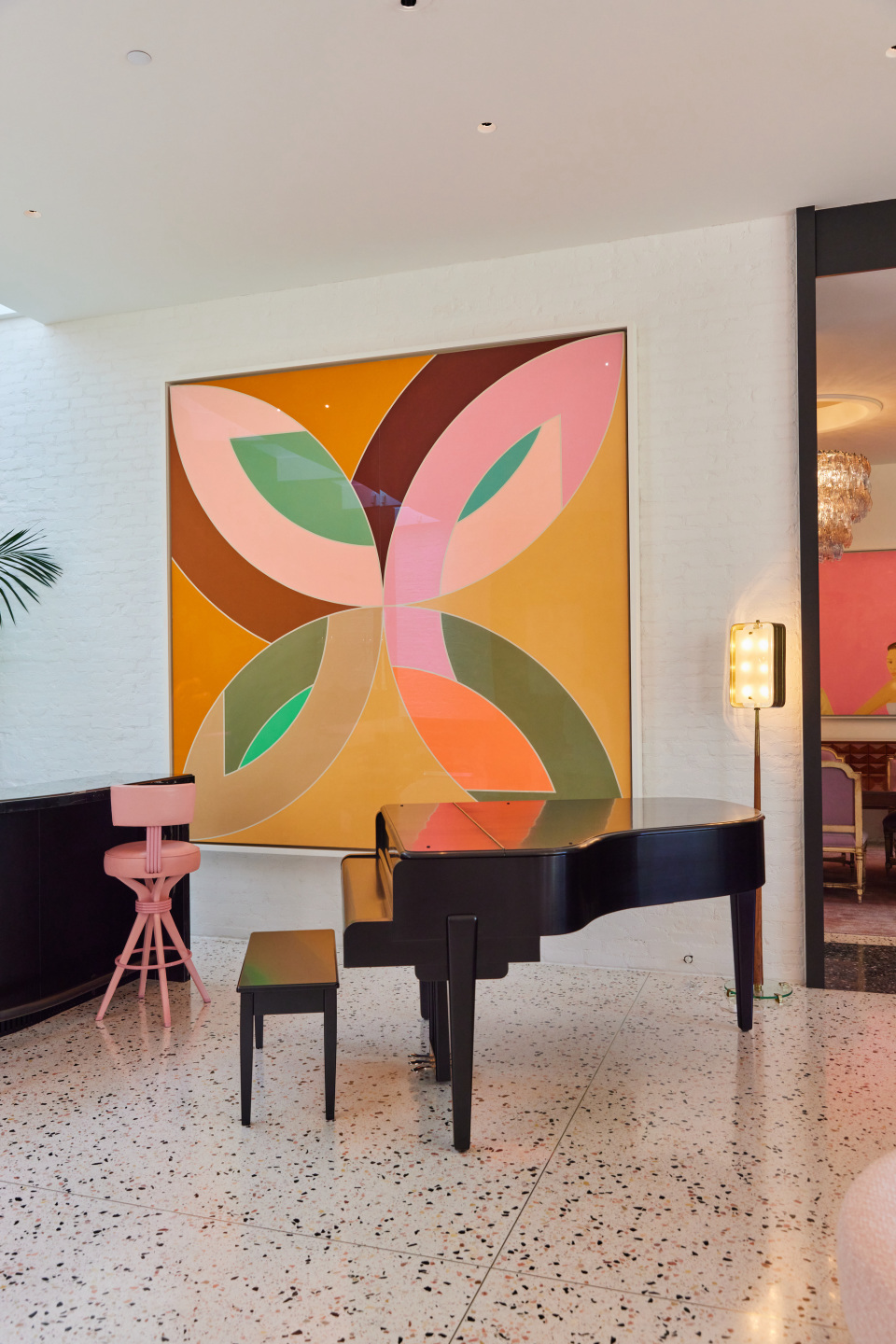
Television presenter, entertainment journalist, model, philanthropist: Mary Kitchen is a contemporary Renaissance woman. Now, the New Brunswick, Canada native has added yet another gig: revamping her Caspar Ehmcke-designed, Hollywood Regency-style home in Holmby Hills, Los Angeles.
While Kitchen has long been immersed in art and interiors—she’s overseen the renovation and design of her family's spaces in New York, the Bahamas, Canada, and Malibu—the opportunity to turn Ehmcke’s 1966 property into her dream home presented an irresistible challenge. With the help of an all-star team including interior designer Jamie Bush, architect William Hefner, and landscape designer Raymond Jungles (yes, that's his real name), Kitchen transformed the mid-century house into her ideal family abode, weaving together retro influences with modern tropical touches.
What really sets the house apart is Kitchen’s ever-growing art collection. Assembled with her husband and CULTURED power art advisor Amy Cappellazzo, the trove includes a hanging sculpture by Olafur Eliasson and paintings by Alex Katz and Frank Stella. As the mother of three young daughters, Kitchen has also ensured female artists are well represented, from Cindy Sherman photographs to Yayoi Kusama canvases.
Here, Kitchen shares how she assembled her impressive collection, how she lives with art and young kids at the same time, and how she narrowly avoided buying a forgery.

What do you think makes the Los Angeles art scene distinct?
Los Angeles has always told its own story. To us, LA is unfolding as one of the most dynamic, approachable and diverse art scenes and we love exploring it together as a family.
How do you incorporate art into your spaces? Is the space built around the work, or do you hunt down pieces that fit your layout?
Both. I have designed spaces for art, but I also believe that if you stick to pieces you love, that speak to you and tell the story you want to tell, they will always find a home.
We designed part of our bedroom for a John Chamberlain sculpture, Hano. It can’t be touched, so we built a central plinth in our bedroom hallway. That’s where it sits. It was always going to be there, but sometimes we have to get creative with how we install pieces with three little kids in the house.

Where does the story of your personal collection begin? What is the first piece you ever bought?
My husband and I have been collecting together for more than a decade. It started with us combining our strengths. It was Amy Cappellazzo appealing to my husband’s business sense that got him interested. For me, it was an Edward Curtis photograph that led me on a hunt to a Phillips auction. A collection of [Hiroshi] Sugimotos came up and I bid on it. I thought we were buying four prints, but it was actually 50! The process of framing those photos and figuring out how to work with that many pieces in my New York apartment changed the way I looked at art and design.
The first major piece we bought was the Olafur Eliasson color wheel. We had visited the Boros bunker in Berlin and had a photograph taken with friends in front of the color wheel. When one came up for auction soon thereafter, we decided to bid.
Which work in your home provokes the most conversation from visitors?
Our Frank Stella, Flin Flon XII, for sure. It is nine feet by nine feet so there’s no way to ignore it! It looks like we matched the room to the painting, but really we were looking for a piece and the color scheme worked perfectly. Stella painted it in Canada, so I feel that also somehow connected me back to my homeland.

How do you discover new artists or work?
We have changed the way we find new work. Now, we work with Amy Cappellazzo, who somehow understands how both of our brains work. She sends us a lot of ideas. In New York, we were surrounded by galleries and auction houses, while here in LA we have developed a network of design friends, as well as all the art shows and events.
I’m currently working on my tenth design project in 10 years, so design influences my art thoughts more than anything. Working with Jamie Bush and his team is a privilege. They are dear friends and we speak the same love language. Designing without a central art conversation wouldn’t work for me. I love working with Jamie and Chad [McPhail] because the conversation always comes back to art and inspiration.
Which artist are you currently most excited about and why?
I unboxed our Lynne Mapp Drexler while I was hanging the gallery wall. It had been in storage and I was blown away by its richness and beauty when I saw it again. It became central to our gallery wall and hangs amongst a variety of female artists—Anne Collier, Pat Steir, and Anne Truitt. Decking the halls with strong women is one of our themes.

What factors do you consider when expanding your collection?
I look for inspiration. Firstly, what do I want to look at? What stories speak to me? It’s a gut thing for me. Jon thinks about the economics. We’re a good team.
What was the most challenging piece in your personal collection to acquire?
We love to surf and have always wanted a Raymond Pettibon. We have been looking for a great surfing one for years—the first one we almost bought was counterfeit. We found this one which was the perfect size and there were two surfers… the whole thing finally worked.
Do you invite your kids into the collecting process? Is the practice something you’re hoping to pass on to them?
Our kids are young—they study a lot of these artists at school. Our art combines our beliefs and our take on the world, so we hope it resonates with them. I’m wondering when one of them is going to realize that it’s probably not a coincidence that there are three sisters hanging on our dining room wall!










 in your life?
in your life?

